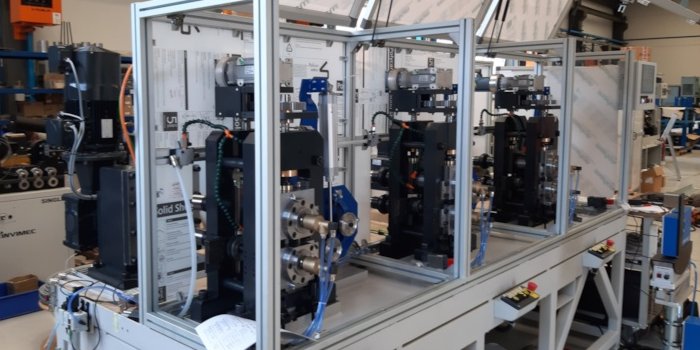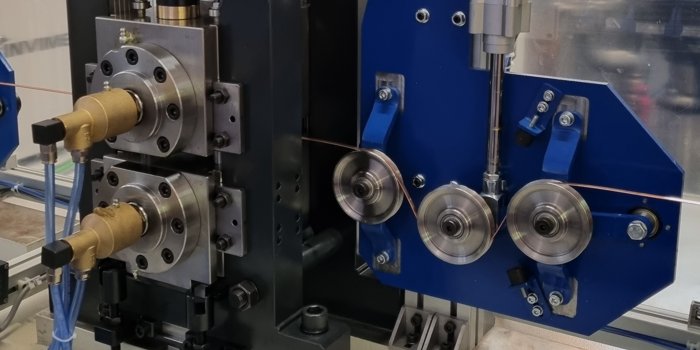Solar panel technology has made significant advancements in terms of efficiency and cost-effectiveness, becoming increasingly accessible for both residential and commercial use. Among the essential components in panel production are solar ribbons and tabbing wires made of copper, which play a crucial role in the transmission of electrical energy.
What are solar panels and how are they produced
Solar energy plays an increasingly crucial role in renewable energy production. Solar energy collection systems have evolved significantly over the years, from the early discoveries to practical applications in the 1950s, to today’s large-scale production, which is expected to further grow in the near future.
The primary means of harnessing solar energy is through solar or photovoltaic panels. These systems consist of metallic elements, semiconductors, and various materials capable of converting sunlight into electrical current. The key components include:
- Solar cells: the active elements in photovoltaic panels that convert solar energy into electricity. Typically, cells are made of monocrystalline or polycrystalline silicon.
- Tempered glass: a layer that protects the cells from the external environment while allowing sunlight to reach the solar cells.
- Frame: provides the physical structure of the solar panel and helps protect it from damage, generally made of aluminum for its lightweight and corrosion resistance.
- Protective layers: such as the backsheet, a plastic layer that shields the panel from various weather conditions, or EVA sheets that protect the solar cells from moisture.
- Junction box: a component attached to the back of the photovoltaic panel, enabling connections between different panels.
- Photovoltaic ribbons: also known as PV ribbons or solar ribbons, these are flat, tinned copper conductors used to connect the photovoltaic cells and transport the generated current to the distribution system.
Each component of the photovoltaic panel plays a fundamental role in electricity production and the overall performance of the solar system. The quality of each component affects the durability, efficiency, and performance of the panel as a whole.

Understanding PV ribbons, solar tabbing wires and bus bars
Photovoltaic ribbons, also known as solar ribbons, are commonly used in solar panel production as they play a vital role in the electrical connection of the entire system.
Copper is the preferred material for carrying large amounts of electrical current with minimal energy losses, thanks to its excellent conductivity. In particular, CDA 102 copper offers a minimum conductivity of 100% on the IACS scale.
Additionally, copper is well-known for its durability and corrosion resistance, making it ideal for outdoor applications and hostile weather conditions. Despite being a more expensive material compared to others, the use of copper in solar panels is considered a worthwhile investment due to its high reliability and long-term effective performance.
Depending on their function, different models of photovoltaic ribbons are available:
- Solar tabbing wires or interconnect ribbons: copper wires used to connect the solar cells within the panel, allowing the passage of solar-derived electrical energy.
- Solar bus bars or ground bars: copper ribbons used to connect solar panels to the junction box or the grounding electrical distribution system, enabling the collection and utilization of the produced current.
Solar panel manufacturers must choose the most suitable photovoltaic ribbons based on various factors such as solar cell thickness, the volume of electrical current to be transported, the soldering tin used, and the resistance to permanent deformation.
Producing high-quality copper PV ribbons, solar tabbing wire and bus bars is therefore essential for constructing solar panels and ensure optimal transmission of electrical energy

INVIMEC’s ESSE130 wire flattening machine for photovoltaic
An effective solution for producing photovoltaic ribbon for solar panels is the use of metal rolling machines, which can precisely reduce the thickness of copper according to specific requirements. With 60 years of expertise in metalworking, INVIMEC offers the new ESSE130 multi-cage wire flattening machine for the needs of PV ribbon manufacturers.
ESSE130 is an extremely versatile machine capable of working with a wide range of metals, including precious, special, exotic alloys, copper, aluminum, steel, brass, as well as bimetallic or trimetallic materials. The independent head structure is designed for total control over the flattening process and material tension.
The thickness of the copper ribbon is continuously adjustable thanks to the two independent brushless motors, precise calibration of individual heads, integrated length and thickness measurement system, and program storage capability.
The ESSE130 multi-cage rolling mill represents a reliable and efficient solution for producing photovoltaic ribbons and solar bus bars, offering high versatility, precise process control, and simplified maintenance.
